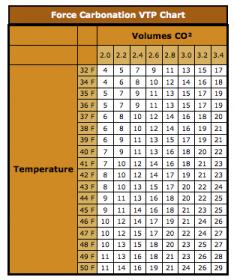I've read several ways to "force" carb with the kegerator and C02 tank. I may have misinterpreted, but do I always have to roll my keg around if I carb by setting at about 12psi and waiting a week or will the C02 still mix in the beer with time? Also, what effect will be on the beer if it's not chilled prior to hooking the gas line up to it? I understand there a difference in how quickly/how much C02 is needed to carb, but if I just hook up a freshly racked keg and carb while it chills will it have any consequences?
Also, do I leave @ 12psi the whole time or after a week I can shut it off and turn it back on to serving pressure when I want a drink?
Also, do I leave @ 12psi the whole time or after a week I can shut it off and turn it back on to serving pressure when I want a drink?




